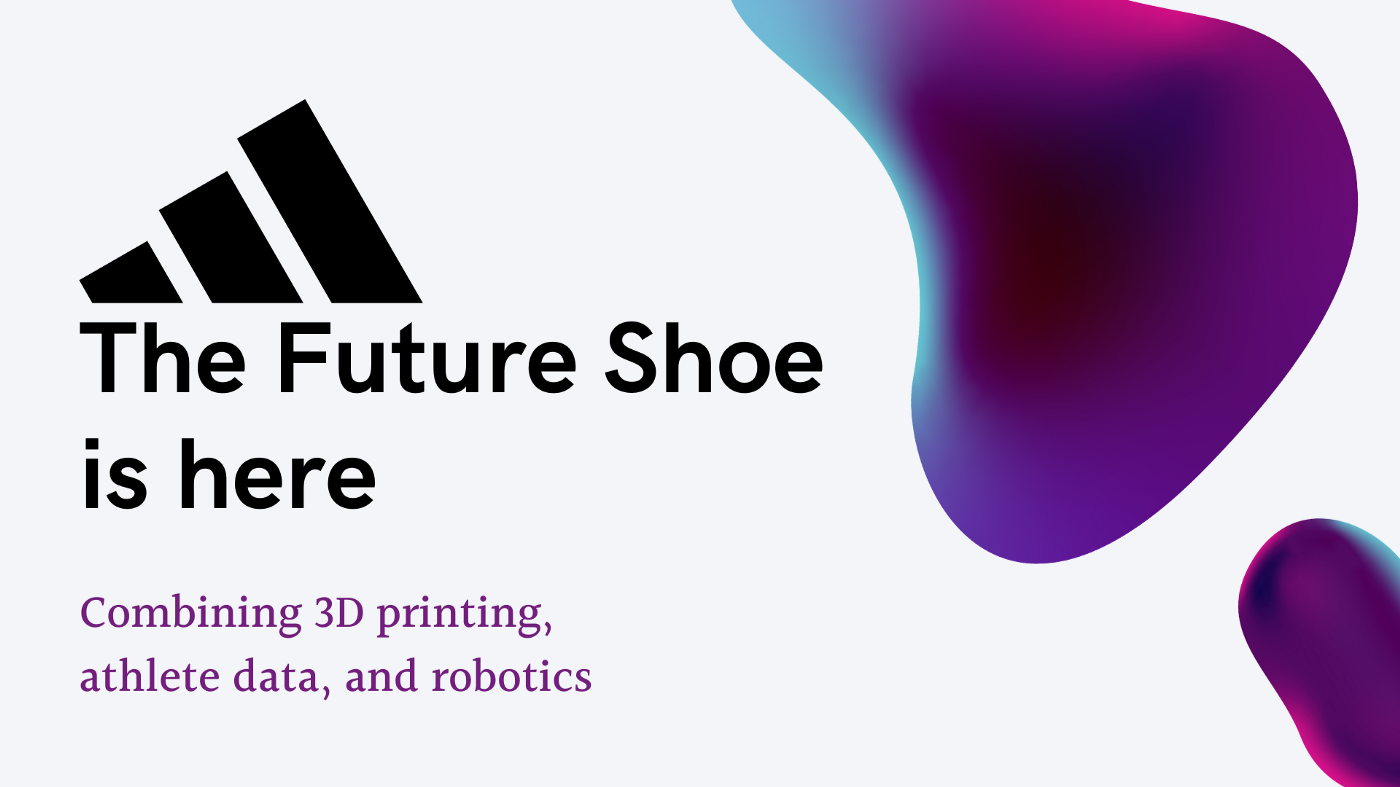The First Running Shoe Made From Data. Adidas Disruptive Innovation That Changes the Shoe Game
Image by Tom & Jerry
June 22nd, 2021 - Author: Fabian Vermum
The Miracle Of Bern
It was the year 1954 when Adidas became known all over the world. The German National team had just been crowned World Champion. Germany came back from a 2:0 deficit and won the game 3:2 against a seemingly unbeatable Hungarian squad. It was a real-life David versus Goliath story, and everybody sympathized with the hard-working German team that defeated the almighty Goliath.
Guess what shoes the winning Germans wore… Trust your instinct: Adidas. Myths started to circle that these new shoes from the small city of Herzogenaurach gave this legendary team an advantage. Adidas had developed exchangeable cleats that could adapt to different pitch conditions. For those of you who are wondering, the iconic three stripes were originally designed to stabilize the foot.
The historical success of Adidas has always been due to its innovative shoes. The shoes became popular among athletes because everybody wanted the best performing shoe. However, in modern times, the battleground has shifted to another area: Marketing.
For decades, Adidas is trying to take the crown away from the undisputed shoe champion Nike. Sure, they have made progress, they even snatched Kanye away from the swoosh, but they still can’t beat Nike. Not at marketing, at least.
A focus on innovation
The major recent innovations for Nike and Adidas have both been around sustainability. While Nike’s initiative ‘Move to zero’ is focusing primarily on the products. It is fair to say that Adidas has already made the next step. The German shoe giant has partnered with the environmental organization ‘Parley for the Oceans’ to design shoes from ocean plastic. Both companies are following the development of other innovative shoe firms like the Swiss brand ON, whose circular shoe I covered in a recent article.
Additionally, together with the biotech startup Bolt Threads, Adidas released a vegan shoe completely made from mushrooms. Going one step further, Adidas has committed to exclusively use recycled materials by 2024. In another genius move, the German shoe brand has re-released a vegan option from their old classics, like the Stan Smith.
While Nike has similar initiatives, they do not state until when this will be the case. However, a time commitment is needed to hold a company accountable.
Plus, Adidas is about to launch its circular running shoe around the summer of 2021. The project is listed under the project ‘Futurecraft.Loop’. When comparing Adidas to ON, one thing becomes clear. If Adidas put as much work in their shoe as they claim, I do not see how ON can keep up with them. While ON is working on one innovative project, Adidas simultaneously works on multiple sustainable solutions. Times have changed, and Adidas is now the Goliath that is being attacked by smaller companies. Only this time, the smaller David (ON) might not have enough innovative strength to overcome his counterpart.
I want to present the ace Adidas is holding up its sleeve: Futurecraft.4D.Strung. What sounds like a complicated folder name on your laptop could emerge as a game-changer.
Image by Matt Ridley at Unsplash
Continuous Development
The Futurecraft 4D STRUNG combines 3D printing, athlete data, and robotics. “STRUNG is not knitting, and it’s not weaving: it hasn’t existed before” (Adidas press report). To design a shoe that fits the foot sounds easy, but it is hard. People tend to forget that human feet are a unique and complex asymmetrical form. You can manufacture shoes from adaptive materials, but these will never be able to fit your individual form.
The Adidas STRUNG solves this problem through multi-disciplinary collaboration. Adidas collects data about the form and movement of the foot and feeds the information into the algorithm that produces the shoe. This allows the robotic machine to string a shoe surface from one material and without any disturbing seams. The sole will be 3D printed using the same technology. The result is a truly personalized shoe that optimizes functionality.
“STRUNG is not knitting, and it’s not weaving: it hasn’t existed before.” (Adidas press report)
The technology has disruptive potential because it continuously improves itself. The more data from athletes is collected, the better the code gets that manufactures the shoe. Afterward, the designer can use the data to enhance the next generation of STRUNG shoes. While Adidas designed the prototype for short-distance training runs at 5m/s or faster, they plan to expand the STRUNG technology to other sports as well.
The prototype shows the degree of customization that is possible by using robotics. Soon runners could use a STRUNG for their 10km slow run in the woods and then switch it up for the next 10km run on asphalt. The possibilities are endless. While this might sound like a futuristic idea, Adidas aims to release the first generation in late 2021/early 2022 (Adidas)
That brings us back to FUTURECRAFT.Loop. Remind yourself that the STRUNG shoes are made only from one material and that Adidas is already experimenting with circular running shoes and mushrooms as the core component. By combining the two sustainability projects, Adidas could design a data-driven circular shoe. If this becomes reality, there will be no dispute about who is the most innovative shoe brand on the planet.
Conclusion
Multi-disciplinary could be the most buzzing word in 2021, and Adidas proves why. The German shoe manufacturer has focused on the skill that propelled them to the top of the shoe game, back in 1954: innovation. When it comes to innovative initiatives and sustainability, Adidas has the firepower to beat their arch rival, Nike.
Especially, the STRUNG project can change the shoe industry forever. Once Adidas establishes a technological lead over its competitors, they might never look back. Code and machine learning technology get better every second, and if you have more data, your results will always be better. Just look at Google as an example. No search engine can have similar performance because Google has more data.
If Adidas manages to combine their three different areas of innovation, (3D printing, circular design, and STRUNG technology) they could reclaim the throne once again.
Related links:
Make sure to visit https://www.adidas.com/us/sustainability for more information about the company’s efforts to improve sustainability.



